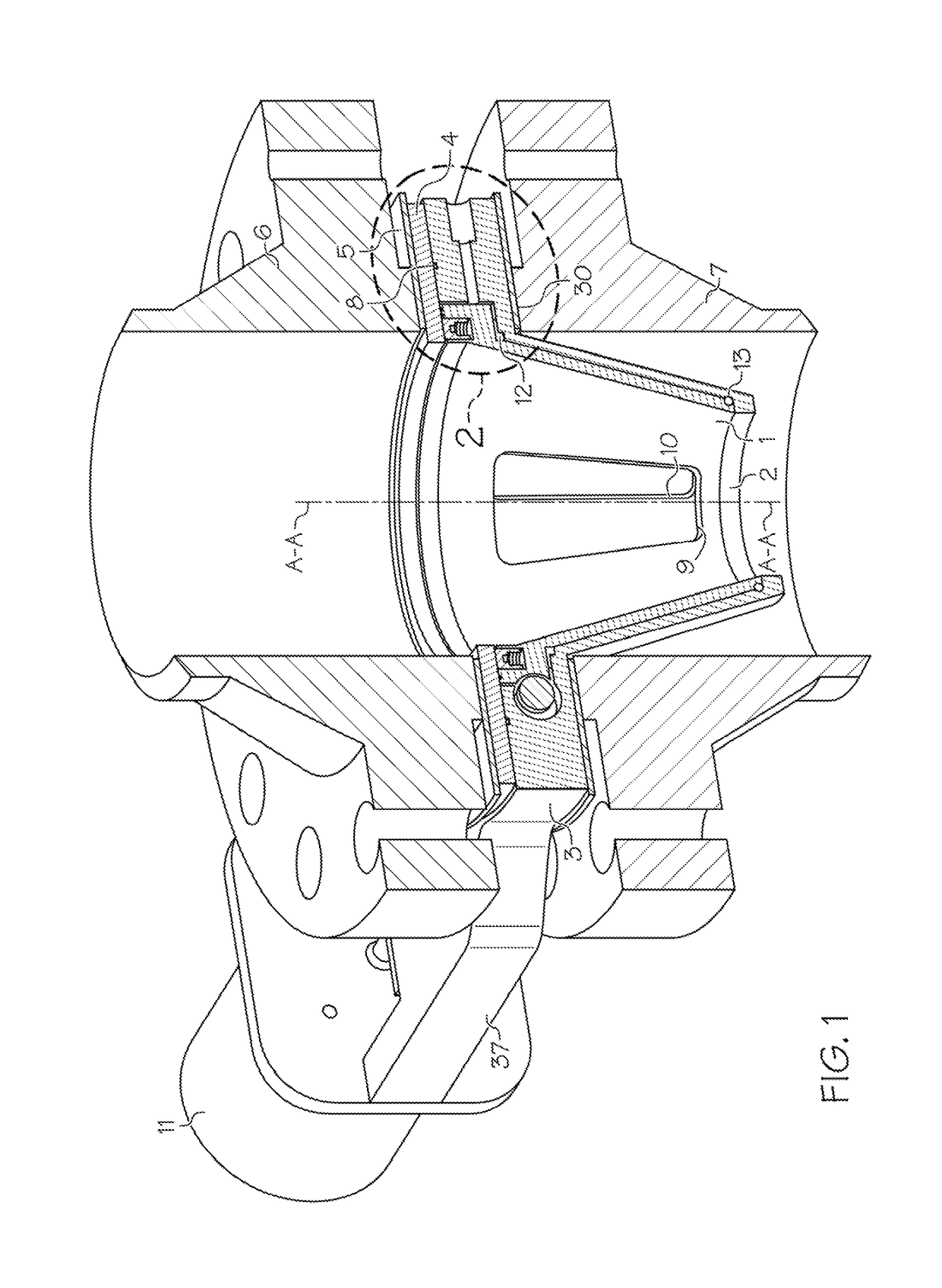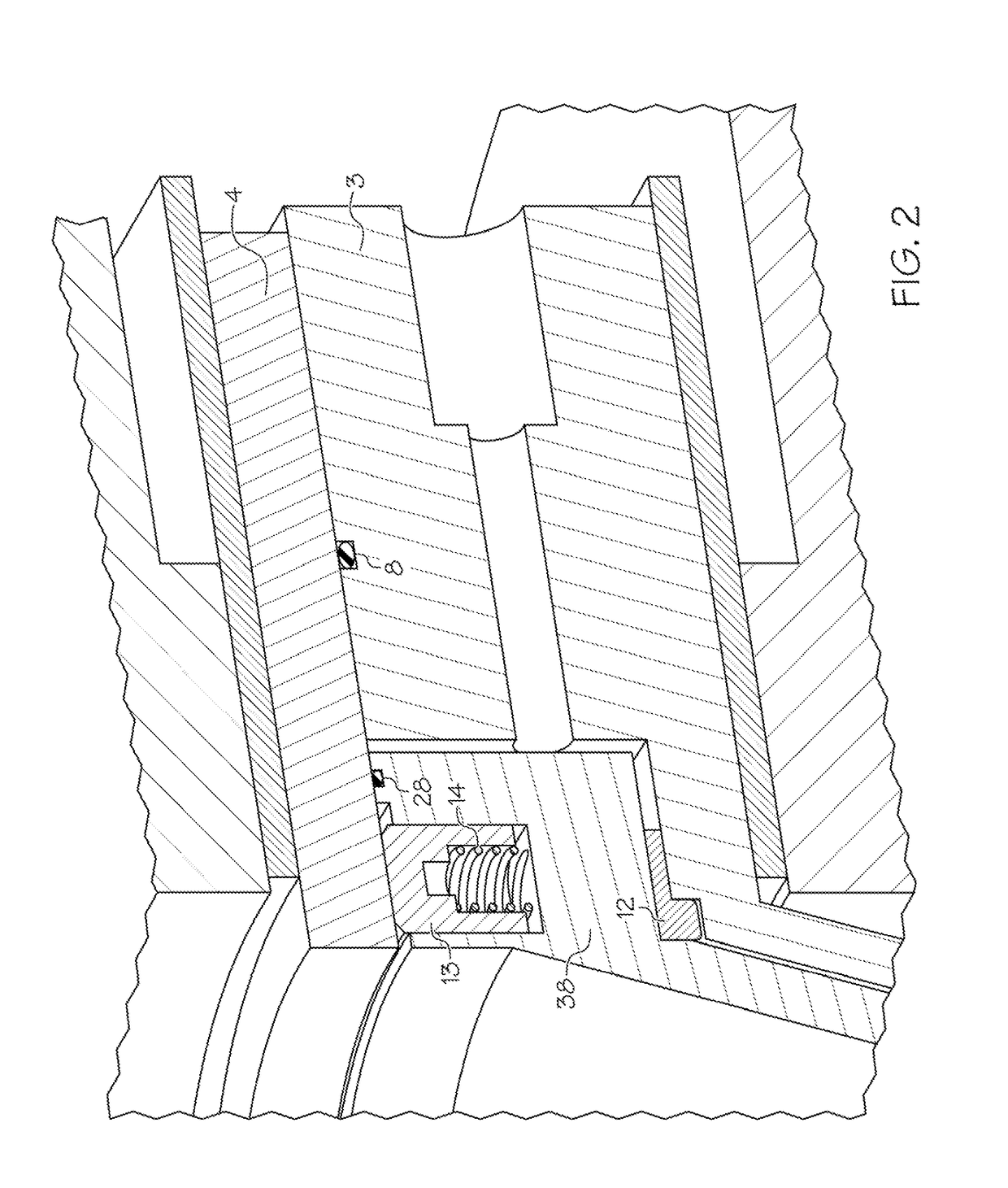Dynamic variable orifice for compressor pulsation control
a compressor and variable orifice technology, applied in machines/engines, liquid fuel engines, positive displacement liquid engines, etc., can solve the problems of affecting the thermodynamic performance of the compressor, affecting and severely compromising the reliability, performance and structural integrity of the reciprocating compressor and its connected system. to achieve the effect of increasing or reducing the effective orifice size or restriction
- Summary
- Abstract
- Description
- Claims
- Application Information
AI Technical Summary
Benefits of technology
Problems solved by technology
Method used
Image
Examples
case 1
[0068 is a 1200 rpm operating point with all four cylinders in double acting mode, but with volumetric clearance added to each head or lower cylinder end to reduce the capacity to a rate of 86.5 million standard cubic feet per day (MMSCFD).
case 3
[0069 is a 1084 rpm operating point with three of the four cylinders in single acting mode (i.e., suction valves removed or disabled to allow gas to bypass them, leaving only the crank or frame end of the cylinder able to compress gas) and with the fourth cylinder in double acting mode, but with volumetric clearance added to the head or lower end of that cylinder to reduce capacity to a rate of 58.0 MMSCFD.
case 8
[0070 is a 1200 rpm operating point with all four cylinders in double acting mode with no volumetric clearance added to the head or lower cylinder end for a capacity of 149.9 MMSCFD. This provides maximum capacity from the compressor.
[0071]As is customary with the current state of the art, a common set of fixed pulsation control orifices was selected for all operating conditions. The common set consists of 5.50 in. diameter orifices for [SRO-1], 3.75 in, diameter orifices for [SRO-2], 350 in, diameter orifices for [DRO-1], and 4.25 in. diameter orifices for [DRO-2].
[0072]The data in FIGS. 11A and 11B shows that a common set of fixed pulsation control orifices is far from optimal. The set was selected to provide best overall performance at Operating Case 1, which is the highest power condition of the cases shown. With the common set of fixed orifices, the suction (from the suction header to the compressor suction flange) and discharge (from the compressor discharge flange to the disc...
PUM
 Login to View More
Login to View More Abstract
Description
Claims
Application Information
 Login to View More
Login to View More - R&D
- Intellectual Property
- Life Sciences
- Materials
- Tech Scout
- Unparalleled Data Quality
- Higher Quality Content
- 60% Fewer Hallucinations
Browse by: Latest US Patents, China's latest patents, Technical Efficacy Thesaurus, Application Domain, Technology Topic, Popular Technical Reports.
© 2025 PatSnap. All rights reserved.Legal|Privacy policy|Modern Slavery Act Transparency Statement|Sitemap|About US| Contact US: help@patsnap.com



